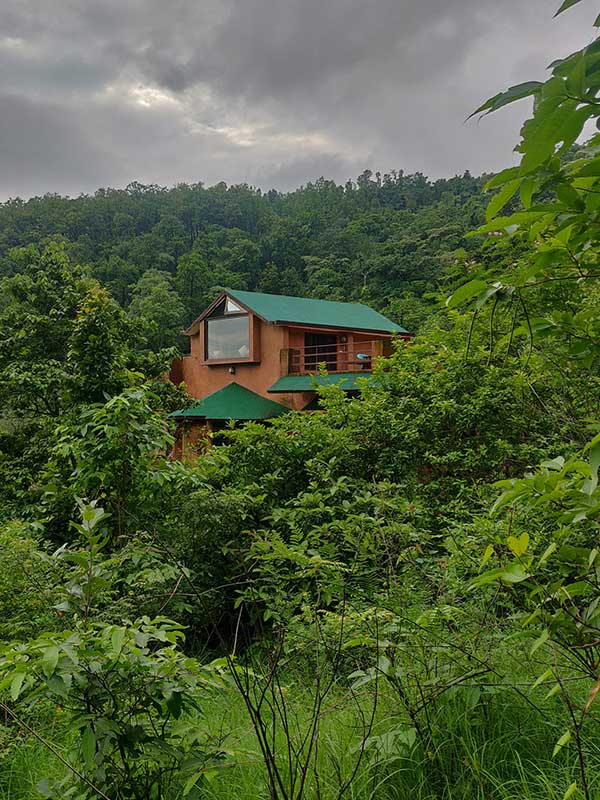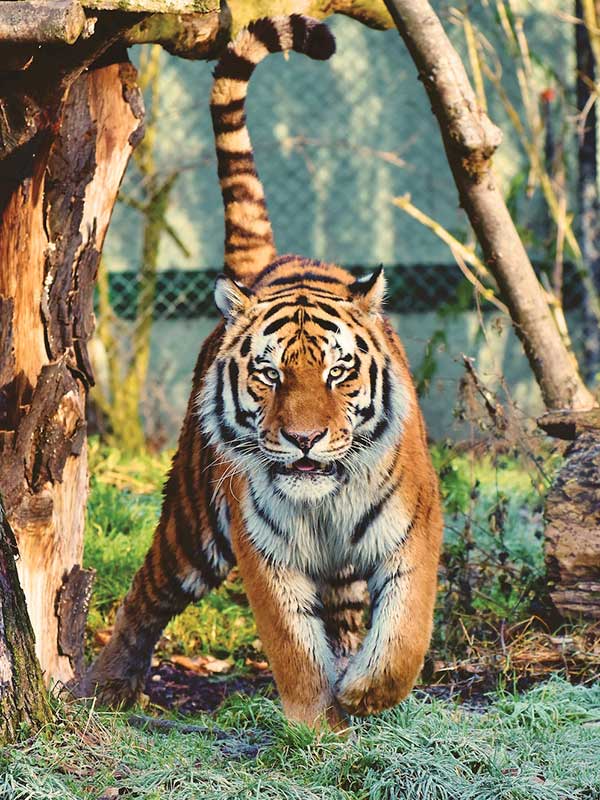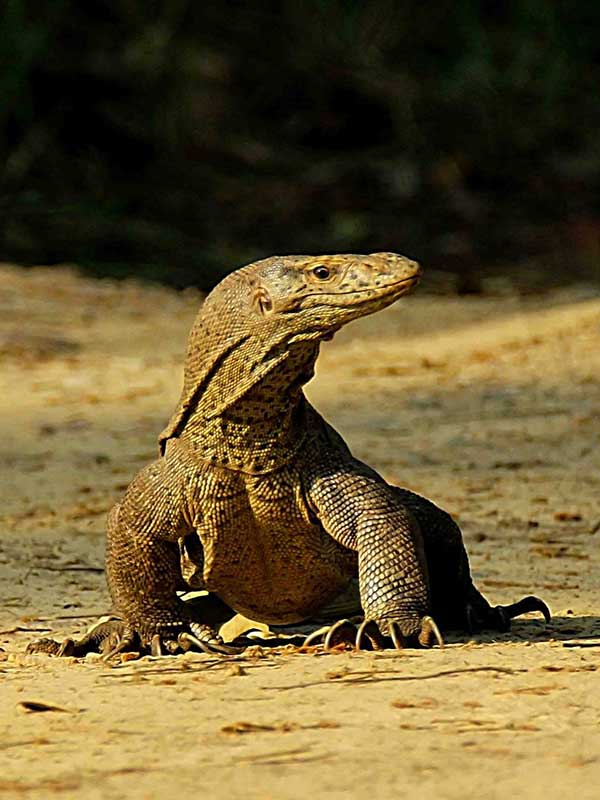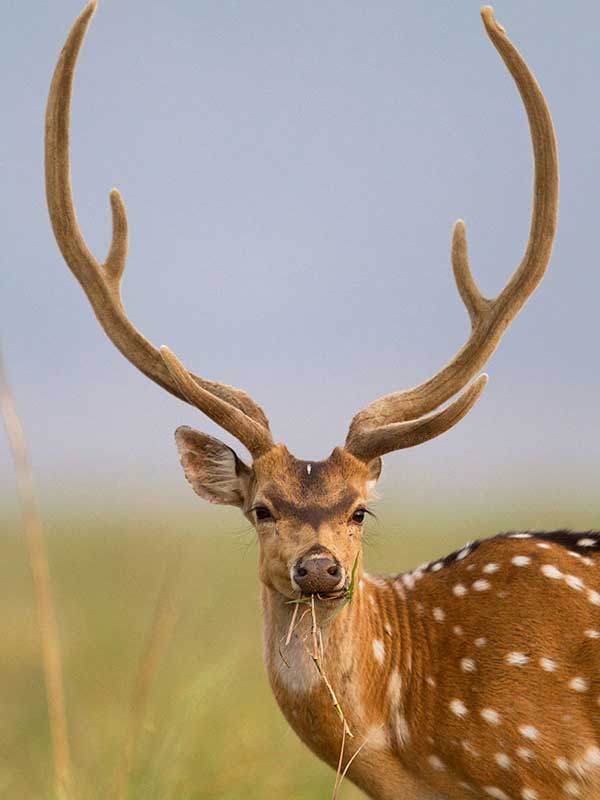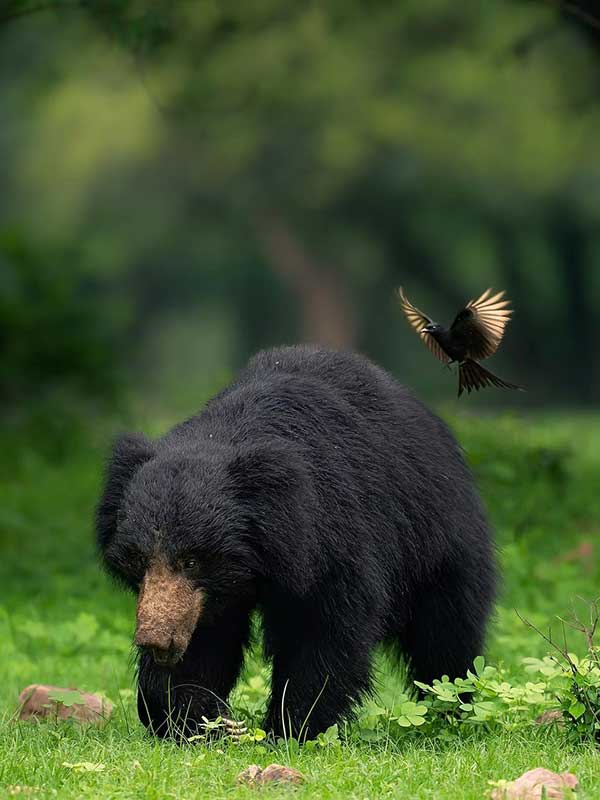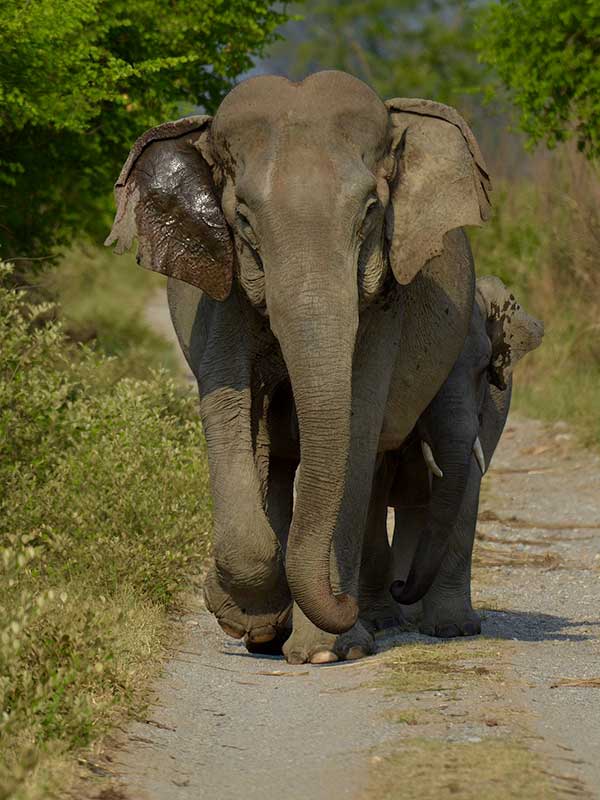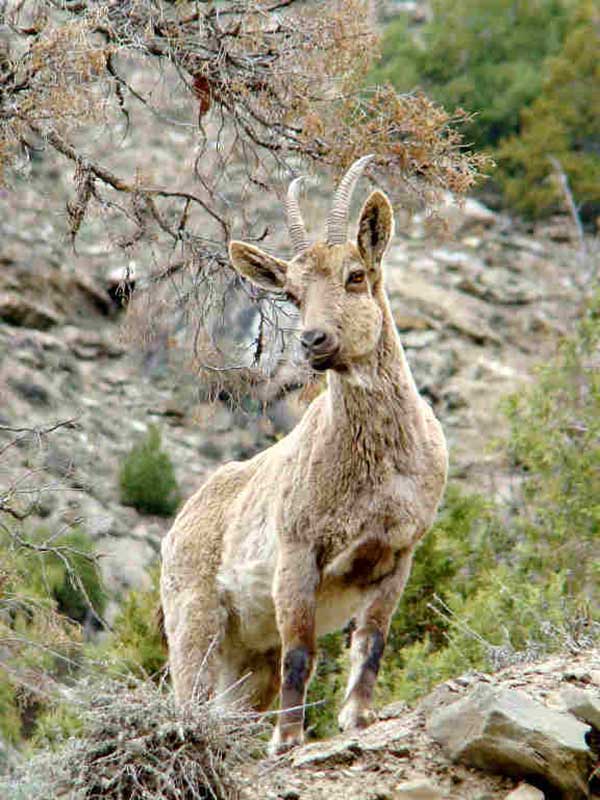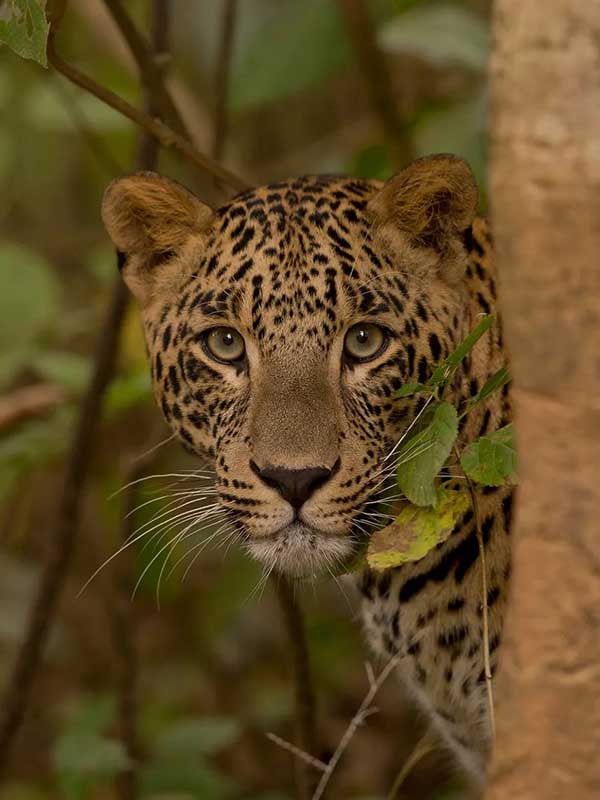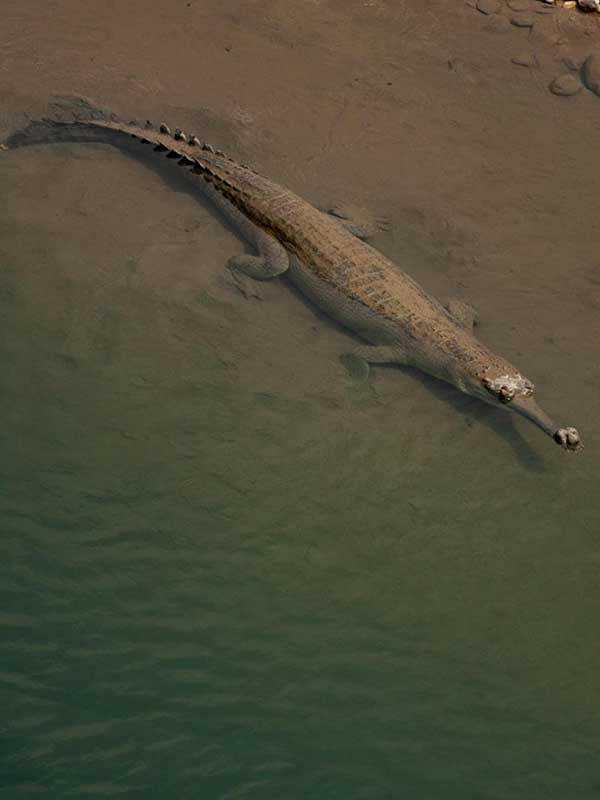JIM CORBETT NATIONAL PARK
Jim Corbett National Park, located in the northern state of Uttarakhand in India, is one of the most popular national parks in the country. Established in 1936, it was initially known as Hailey National Park and was renamed in honor of the legendary hunter and conservationist Jim Corbett, who played a significant role in the establishment of this park.
Spread over an area of 520 square kilometers, Jim Corbett National Park is home to a diverse range of flora and fauna. The park is situated at the foothills of the Himalayas and is surrounded by scenic mountains, rivers, and forests. It is known for its rich biodiversity and is home to over 600 species of birds, 50 species of mammals, and 25 species of reptiles.
The park is particularly famous for its population of Bengal tigers, which are among the largest and most majestic of all big cats. It is estimated that there are around 200 tigers living in the park, making it one of the best places in India to see these magnificent animals in their natural habitat. Apart from tigers, the park is also home to other big cats such as leopards and jungle cats, as well as a variety of herbivores such as elephants, deer, and wild boars.
In addition to wildlife, Jim Corbett National Park is also known for its scenic beauty and adventure activities. Visitors can go on jungle safaris, take guided nature walks, and go birdwatching. The park also offers opportunities for river rafting and rock climbing, making it a popular destination for adventure enthusiasts.
Apart from the wildlife and adventure activities, the park also has a rich cultural and historical significance. It is believed that the region has been inhabited by humans for thousands of years and is home to several ancient temples and shrines. The park also has a museum dedicated to the life and work of Jim Corbett, which is a must-visit for anyone interested in the history of conservation in India.
Overall, Jim Corbett National Park is a must-visit destination for anyone who loves nature, wildlife, adventure, or history. With its diverse range of flora and fauna, stunning scenery, and rich cultural heritage, it is truly one of the jewels of India’s national park system.
Jim Corbett National Park
The Corbett National Park has been separated into six main tourism zones in order to boost tourism in this area. These are the park’s clearly defined core or buffer zones, where guests can participate in the wildlife safari and observe the animals’ alluring behaviour up close.
The Tourist Zones
The Corbett National Park has been separated into six main tourism zones in order to boost tourism in this area. These are the park’s clearly defined core or buffer zones, where guests can participate in the wildlife safari and observe the animals’ alluring behaviour up close.
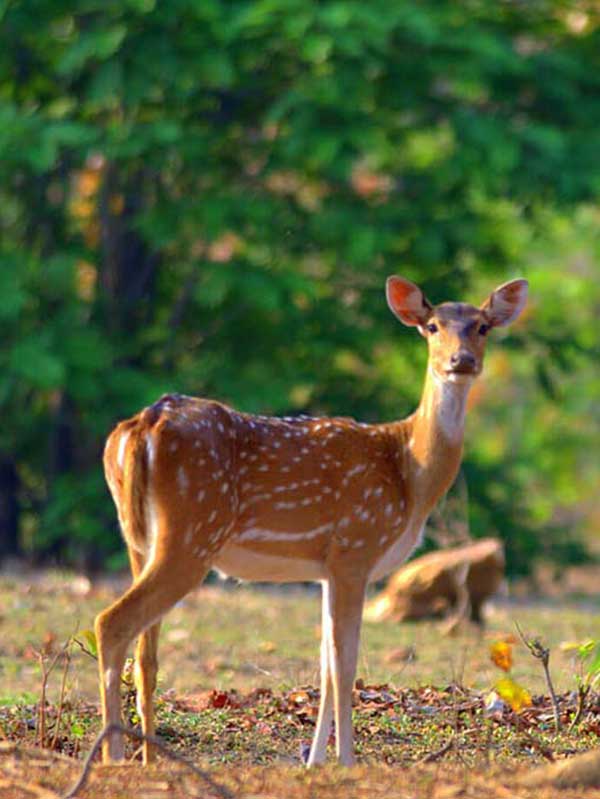
Bijrani Safari Zone
Bijrani Safari Zone is one of the six ecotourism zones in Jim Corbett National Park, located in the state of Uttarakhand in India. It is known for its rich diversity of flora and fauna, making it a popular destination for wildlife enthusiasts and nature lovers. The Bijrani Safari Zone is situated on the southern part of the Jim Corbett National Park, and covers an area of approximately 400 square kilometers.
The Bijrani Safari Zone is known for its dense sal forest, which provides an ideal habitat for a wide range of wildlife species, including the Bengal tiger, Indian elephant, sloth bear, leopard, and several species of deer. The best time to visit the park is during the winter months, between November and February, when the weather is pleasant and wildlife sightings are more frequent.
Visitors to the Bijrani Safari Zone can explore the park on a jeep safari or an elephant safari, accompanied by an experienced guide. The jeep safaris are ideal for small groups of up to six people, while the elephant safaris provide a unique and immersive experience, allowing visitors to get up close and personal with the wildlife.
Jhirna Safari Zone
Jhirna Safari Zone is one of the popular eco-tourism zones located in the Jim Corbett National Park, Uttarakhand, India. This zone is situated on the southern part of the national park and is one of the most sought-after safari zones by the tourists visiting the park. Jhirna zone is home to diverse flora and fauna and is known for its large populations of wild elephants and deer.
The Jhirna zone is approximately 16 km from Ramnagar and can be accessed by jeep safaris. This zone has a dense deciduous forest which is a perfect habitat for a wide variety of wildlife species such as tigers, leopards, Indian antelope, and wild boar. The Jhirna zone is also home to several bird species such as Himalayan griffon vultures, crested serpent eagles, and red junglefowl.
The best time to visit the Jhirna zone is during the winter season, between November and February when the weather is pleasant and the wildlife is more active. Visitors can enjoy a thrilling jeep safari in the Jhirna zone accompanied by a professional guide who will provide all the necessary information about the flora and fauna of the park.
In conclusion, Jhirna Safari Zone is a must-visit destination for wildlife enthusiasts and nature lovers. The zone offers an opportunity to explore the diverse wildlife and natural beauty of Jim Corbett National Park, making it an unforgettable experience for visitors.

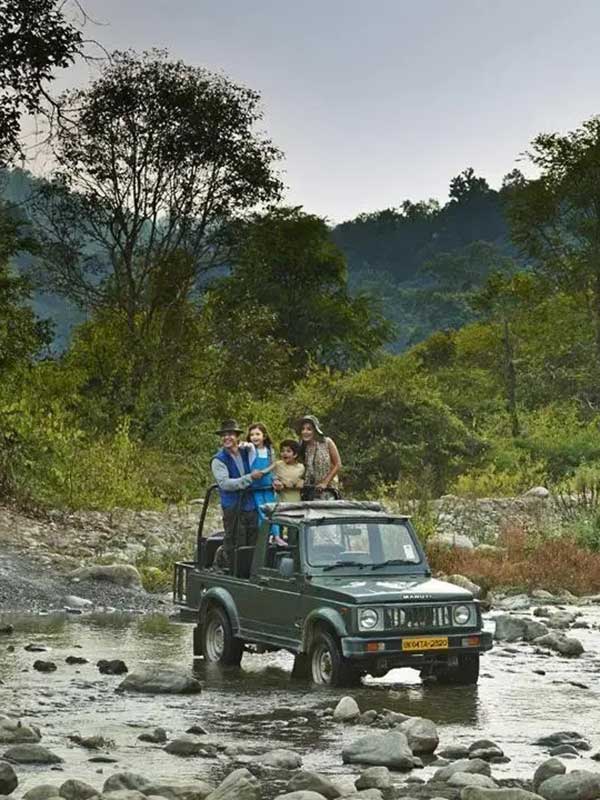
Dhela Safari Zone
Dhela Safari Zone is one of the six ecotourism zones located in the Jim Corbett National Park, Uttarakhand, India. This zone is located in the southern part of the national park and covers an area of approximately 25 square kilometers. It is a relatively new safari zone and was opened to the public in 2014.
Dhela Safari Zone is known for its stunning landscapes and diverse wildlife, making it a popular destination for nature lovers and wildlife enthusiasts. The zone is home to several wildlife species, including the Bengal tiger, Indian elephant, sloth bear, and several species of deer.
The Dhela Safari Zone can be accessed by jeep safaris, which are organized by the forest department. Visitors can enjoy a thrilling safari experience, exploring the dense forests of the zone, accompanied by an experienced guide who will provide all the necessary information about the flora and fauna of the park.
The best time to visit the Dhela Safari Zone is between November and June, when the weather is pleasant and the wildlife is more active. Visitors can also enjoy bird watching, as the zone is home to several species of birds, including the crested serpent eagle, Himalayan griffon vulture, and red junglefowl.
Overall, Dhela Safari Zone is a must-visit destination for anyone interested in exploring the natural beauty and wildlife of Jim Corbett National Park. With its diverse wildlife and stunning landscapes, the Dhela Safari Zone is a true paradise for nature lovers.
Dhikala Zone
Dhikala Zone is one of the most popular eco-tourism zones in Jim Corbett National Park, Uttarakhand, India. It is located in the central part of the national park and is known for its rich diversity of flora and fauna. The zone covers an area of approximately 520 square kilometers and is home to several wildlife species, including the Bengal tiger, Indian elephant, sloth bear, and several species of deer.
Dhikala Zone is known for its dense Sal forests, grasslands, and riverine belts, providing an ideal habitat for a wide range of wildlife species. The zone is also home to several bird species, making it a popular destination for bird watchers.
Visitors to the Dhikala Zone can enjoy a thrilling safari experience, exploring the wildlife and natural beauty of the park. The zone can be accessed by jeep safaris or elephant safaris, accompanied by an experienced guide. Elephant safaris are a unique and immersive experience, allowing visitors to get up close and personal with the wildlife.
The best time to visit the Dhikala Zone is between November and June when the weather is pleasant, and the wildlife is more active. Visitors can also stay overnight in the zone, in one of the forest lodges, to experience the wilderness of the park.
Overall, Dhikala Zone is a must-visit destination for wildlife enthusiasts and nature lovers. With its diverse wildlife, stunning landscapes, and thrilling safari experiences, the zone offers a truly unforgettable experience for visitors.
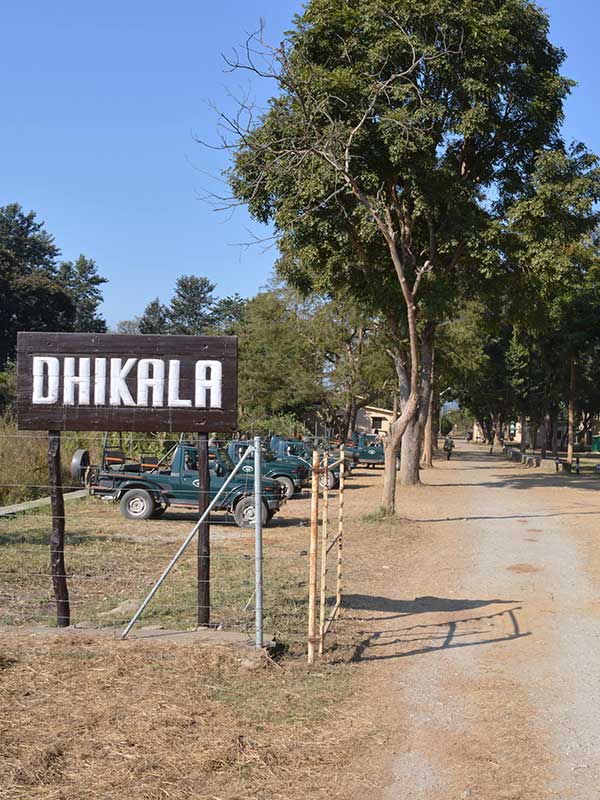
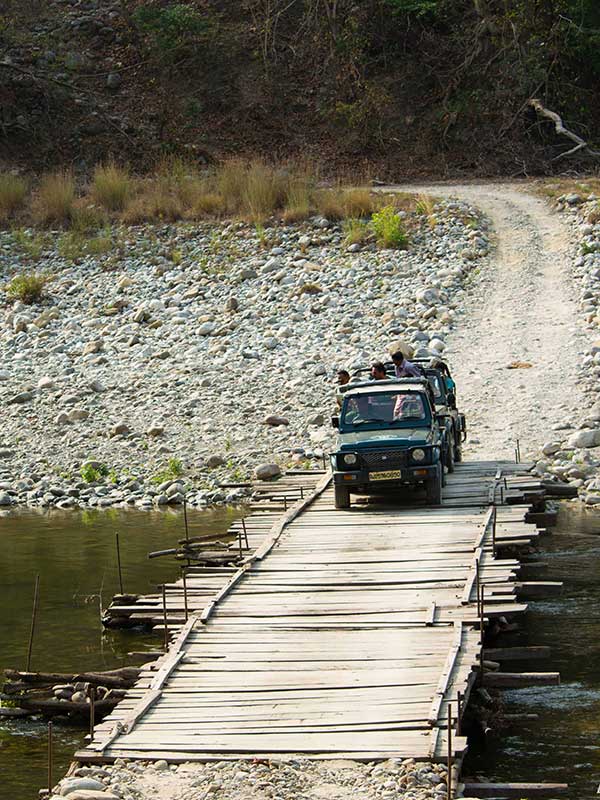
Durga Devi Zone
Durga Devi Zone is one of the lesser-known ecotourism zones in Jim Corbett National Park, Uttarakhand, India. It is located in the northeastern part of the park and is known for its tranquil and serene environment, making it an ideal destination for those seeking a peaceful and relaxing getaway.
Durga Devi Zone covers an area of approximately 52 square kilometers and is home to several wildlife species, including the Bengal tiger, Indian elephant, and several species of deer. The zone is also home to several bird species, including the Himalayan griffon vulture, crested serpent eagle, and red junglefowl.
Visitors to the Durga Devi Zone can enjoy a range of activities, including jeep safaris, bird watching, and nature walks. The zone is also known for its picturesque landscapes and is a popular destination for nature photography.
The best time to visit the Durga Devi Zone is between November and June, when the weather is pleasant and the wildlife is more active. Visitors can also stay overnight in the zone, in one of the forest lodges, to experience the wilderness of the park.
Overall, Durga Devi Zone is a hidden gem in Jim Corbett National Park, offering a peaceful and serene environment, stunning landscapes, and diverse wildlife. It is a must-visit destination for nature lovers and those seeking a unique and immersive wilderness experience.
Sitabani Buffer Zone
Sitabani Buffer Zone is a part of the Jim Corbett National Park located in the northern part of the park, adjacent to the Kosi River. It is a popular destination for wildlife enthusiasts, bird watchers, and nature lovers who seek a peaceful and serene environment.
Sitabani Buffer Zone is known for its diverse wildlife, including several species of deer, leopards, and elephants. The zone is also home to several bird species, including the Himalayan griffon vulture, crested serpent eagle, and red junglefowl.
Visitors to the Sitabani Buffer Zone can enjoy a range of activities, including jeep safaris, bird watching, and nature walks. The zone is also known for its picturesque landscapes and is a popular destination for nature photography.
The best time to visit the Sitabani Buffer Zone is between November and June, when the weather is pleasant and the wildlife is more active. Visitors can also stay overnight in one of the forest lodges to experience the wilderness of the park.
Overall, Sitabani Buffer Zone is a must-visit destination for those seeking a peaceful and serene environment, stunning landscapes, and diverse wildlife. With its unique mix of natural beauty and wildlife, the zone offers a truly unforgettable experience for visitors. It is a great place to unwind and connect with nature, away from the hustle and bustle of city life.
